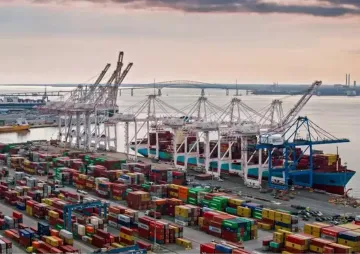Maritime cooperation is one of the important aspects of the India-ASEAN strategic partnership. The ongoing territorial disputes among some of the ASEAN nations and China in the South China Sea is challenging the regions peace and tranquillity. India holds a primary interest in the Freedom of Navigation (FON) through the South China Sea. It also has an economic interest in exploring hydrocarbon resources in the area with ONGC Videsh Ltd. (OVL) the global arm of the Indian petroleum company, Oil and Natural Gas Ltd. (ONGC) operating in two oil blocks in Vietnam. China's increasingly assertive navy make it necessary for New Delhi to maintain its stakes and safeguard its interests in the region. This in turn will require continued naval engagement with the littorals. India can be a key player in maintaining peace and security in the region and for that New Delhi must further strengthen its maritime cooperation with the Association for the South East Asian Nations, despite China's disapproval. As India looks to strengthening its ties with members of the Association for Southeast Asian nations (ASEAN), this article looks at India's naval cooperation with ASEAN countries and evaluates India's role as the balancing actor that the ASEAN nations seek.
China's growing assertiveness
The SCS is an important trade route and a major Sea Lane of Communication (SLOC)with six nations (China, Taiwan, the Philippines, Vietnam, Brunei and Malaysia) competing over territorial rights in the region. China, the most assertive in its claims, considers the entire SCS in a U shaped line as its territory.
Beijing's claims go well into the Exclusive Economic Zone (EEZ) of the other disputing nations. China's vigorous pursuance of its territorial claims concern the international community as this affects a major SLOC. China even protests India's oil exploration with Vietnam in Block 128 despite the block falling within Vietnam's EEZ. Beijing nevertheless went ahead and put the block up for bidding to international companies ignoring the fact that it is already being operated by India. The China Philippines row in 2012 over the Scarborough Shoal incident is another instance where China displayed its assertive behaviour.
While Beijing strongly opposes internationalisation of the issue and suggests that the disputes be resolved bilaterally, countries like Vietnam and the Philippines do not want to be seated alone against Beijing at the negotiating table. Hence, the countries seek extra regional powers to balance the situation.
India-ASEAN naval cooperation
India's naval cooperation with the Southeast Asian nations is an important dimension of the "Look East Policy", launched in the early 1990's. India ASEAN relations have improved incrementally in recent years with India becoming the ASEAN Sectoral Dialogue Partner in 1992, and a full Dialogue Partner as well as a member of the ASEAN Regional Forum (ARF) in 1996. In December 2012, India and ASEAN celebrated 20 years of dialogue partnership and 10 years of Summit level partnership. Today India ASEAN relations stand at an elevated echelon of a strategic partnership.
The Indian Navy has been carrying out joint exercises and military drills with the navies of the Southeast Asian nations for a long period of time. India has enhanced its naval cooperation with the ASEAN nations and seek to further strengthen its defence cooperation with the countries. However, China is wary of New Delhi's growing closeness to its ASEAN neighbours and perceives this as a strategy to counter balance a rising China. Such concerns are fuelled due to countries such as Vietnam and the Philippines, who are seeking extra regional powers to maintain their presence and encourage their engagements in the region.
It must be noted that India's naval cooperation with the ASEAN nations date back to the early 1990's. Although India and its ASEAN counterparts may not have yet realised the full potential of their naval cooperation, there has been incremental progress on this front over the years. The table below lists out the current exercises between the Indian Navy and the navies of the ASEAN nations.
As India's stake in the region increase and tension over maritime disputes rise, the need for Indian presence is set to shoot up.
| Exercise |
Country |
Remarks |
| SIMBEX (Singapore India Maritime Bilateral Exercise) |
Singapore |
Annual bilateral exercises between the two navies. The exercise has been carried out in the South China Sea in the years 2005, 2007, 2009, 2011,2013 |
| MILAN (Multi nation Exercise) |
Singapore, Vietnam, Thailand, Malaysia, Indonesia, Brunei and the Philippines |
Hosted by the Indian Navy, it's a Multinational exercise and interaction with the navies of South East Asia in the Bay of Bengal. It was initiated in 1995 and is a biennial gathering |
| Indo-Thai Coordinated Patrol (Indo-Thai CORPAT) |
Thailand |
Started in September 2005 and is conducted along the maritime boundary line. |
| IND INDO CORPAT
(India-Indonesia Coordinated Patrol) |
Indonesia |
Started in the year 2000, it is conducted along the International Maritime Boundary Line (IMBL) |
Source : Compiled from annual reports, Ministry of Defence, Government of India.
Indian presence in the region has not been fuelled solely by the recent ongoing maritime disputes. Indian presence in the South China Sea dates back to early 2000 with India's overseas naval deployment to the area as well as in the form of SIMBEX.
India has regularly deployed its vessels from its Eastern Fleet to Southeast Asia and the SCS. New Delhi has deployed its vessels for Presence-cum-Surveillance missions in the Malacca Strait, Sunda Strait and the South China Sea during May 2003I .
India also sent its aircraft carrier INS Viraat on Southeast Asia deployments to mark its presence and build its ties with the ASEAN navies complemented with high level visits on the defence front between India and the ASEAN nations. In 2003 Singapore's Defence Minister, visited India and signed an agreement on defence cooperationII . A bilateral agreement for the conduct of joint military training and exercises between the two countries was signed in 2007. New Delhi held its first India Vietnam security dialogue in 2003 and signed a Memorandum of Understanding (MoU) on defence cooperation in 2009. India also participated in a security dialogue with the Philippines in 2003III and institutionalized the Joint Defence Cooperation Committee in 2012.
Additionally, the Indian Navy frequently visits major ports in Singapore, Thailand, Vietnam, the Philippines, Cambodia and Indonesia while deployed to the SCS and Southeast Asia. The 2012 Commemorative Summit also saw the Indian Naval Ship Sudarshini embarking on a commemorative ship expedition to ASEAN countries from 15 September 2012 to 25 March 2013. The expedition retraced the sea routes linking India with South East Asia, covering most of the modern and ancient ports in the ASEAN countries. The expedition was conceptualized to demonstrate India's historical proximity with its ASEAN neighbours and to commemorate the longstanding ASEAN-India maritime and trade relationship.
Defence diplomacy
Naval goodwill visits are an important element of defence diplomacy. Defence engagements are crucial to build and maintain trust and contribute toward conflict prevention and resolution. In this, India and ASEAN share common ground wherein both parties seek to maintain peace and security in the region. This was reflected by the Vision statement adopted at the India-ASEAN commemorative Summit 2012, which underlines the importance of maritime security. "We are committed to strengthening cooperation to ensure maritime security and freedom of navigation, and safety of sea lanes of communication for unfettered movement of trade in accordance with international law, including UNCLOS" stated the Vision Statement, highlighting the main concerns in the SCS namely freedom of navigation and the need to adhere to international rules and norms.
ASEAN nations have welcomed Indian presence in the region and wish to see India pursue its engagements. Both sides have realised the importance of India ASEAN cooperation. Indian Prime Minister Manmohan Singh underlining the need to further strengthen ties remarked in May 2013 that "...ASEAN countries are our strategic partners and there are enormous opportunities of expanding trade ties, expanding investment relations, expanding maritime cooperation, expanding the scope of trade and investment. And now we have reached a stage where large-scale flow of trade and investment is becoming a reality..." When Beijing put up Block 128 for bidding to international companies, Vietnam was enraged and protested vigorously. Vietnam then requested OVL to stay put in the block and promised more data and help to successfully drill the oil block. India had earlier decided that it may vacate the oil block due to unsuccessful drilling but reconsidered its decision. In January 2013, Vietnamese Deputy Prime Minister Mr. Vu Van Ninh invited "Indian companies to continue to invest and enter into Vietnam".
The stabilising factor
The ongoing maritime disputes in the SCS are a major concern for the ASEAN nations. It has created a rift within ASEAN as the nations are divided on how to resolve the disputes. Countries like Singapore and Vietnam believe that India can play a positive role in the regions peace and stability. India is concerned over the maritime disputes and their implications. The maritime disputes and the safety of sea lanes are discussed in all major forums between India and ASEAN for whether it is the India ASEAN Summit, or the Delhi Dialogue. What is yet to be seen if India can be the balancing actor that the region seeks.
New Delhi's presence in the area is not a strategy to counter China but rather a necessity to safeguard its interests from an increasingly assertive Beijing. India looks to increase its engagements with ASEAN nations and in turn, the Southeast Asian nations seek its presence in stabilising the region. Although there is a concerted effort for an increased cooperation on maritime security, New Delhi must be careful not to let China intimidate this collaboration. Keeping in mind the rapidly changing geo political dynamics in Asia, and India's vision of enhanced cooperation, it would be beneficial for India to remain in the area and protect its interests. New Delhi must continue to engage and cooperate with the ASEAN countries to realise its desired level of strategic partnership. This in turn would involve deepening naval cooperation with the key countries of ASEAN and major powers sharing India's interest in defending the principle of Freedom of Navigation and maintaining peace and stability. New Delhi must find the political will to be the stabilising factor that its ASEAN friends seek.
Endnotes:
1. Annual Report-2004-05, Ministry of Defence, Government of India.
2. Annual Report-2003-04, Ministry of Defence, Government of India
3. Ibid.
(Darshana M. Baruah is an Editorial Associate, South China Sea Monitor)
Courtesy : South China Sea Monitor
"
The views expressed above belong to the author(s). ORF research and analyses now available on Telegram! Click here to access our curated content — blogs, longforms and interviews.




 PREV
PREV

